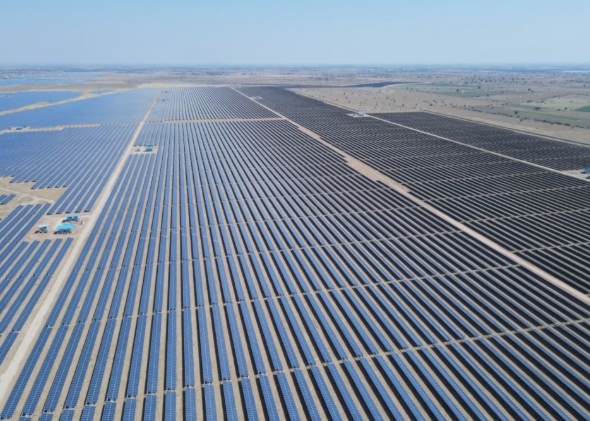Wedoany.com Report-Apr. 14, India’s solar energy sector achieved significant growth in fiscal 2025, adding 23,823 MW of capacity, a 58.5% increase from the previous year. According to JMK Research, this expansion was fueled by utility-scale projects, robust rooftop solar adoption through the PM Surya Ghar scheme, and a sharp rise in off-grid installations.
Utility-scale solar projects contributed 16.9 GW, marking a 47% increase from fiscal 2024. JMK Research credited this growth to the Ministry of New and Renewable Energy’s 2023 directive to issue 50 GW in tenders, alongside growing corporate interest in green open access markets and declining solar module prices in late fiscal 2024.
The rooftop solar segment added 5,148 MW, reflecting a 72% year-on-year rise. “This growth was primarily driven by the PM Surya Ghar: Muft Bijli Yojana, which facilitated significant capacity additions in the residential sector,” said JMK Research. The scheme played a key role in expanding access to solar energy for households.
Off-grid and distributed solar installations surged to 1,785 MW, nearly three times the capacity added in the prior year, further diversifying India’s solar energy landscape.
Regionally, Rajasthan led with 6,431 MW of new solar capacity, followed by Gujarat with 3,268 MW and Maharashtra with 2,146 MW. For rooftop solar, Gujarat topped the list with 1,649 MW, followed by Maharashtra at 1,227 MW and Kerala at 515 MW.
By the end of fiscal 2025, India’s total renewable energy capacity reached 220 GW, according to MNRE data. Solar energy comprised 48% of this total, making it the largest contributor, followed by wind at 23%, large hydro at 22%, bio power at 5%, and small hydro at 2%.
This growth underscores India’s commitment to expanding clean energy infrastructure, with solar playing a central role in meeting national renewable energy goals. The combination of government initiatives, corporate participation, and cost reductions has positioned the country as a leader in solar deployment.

















